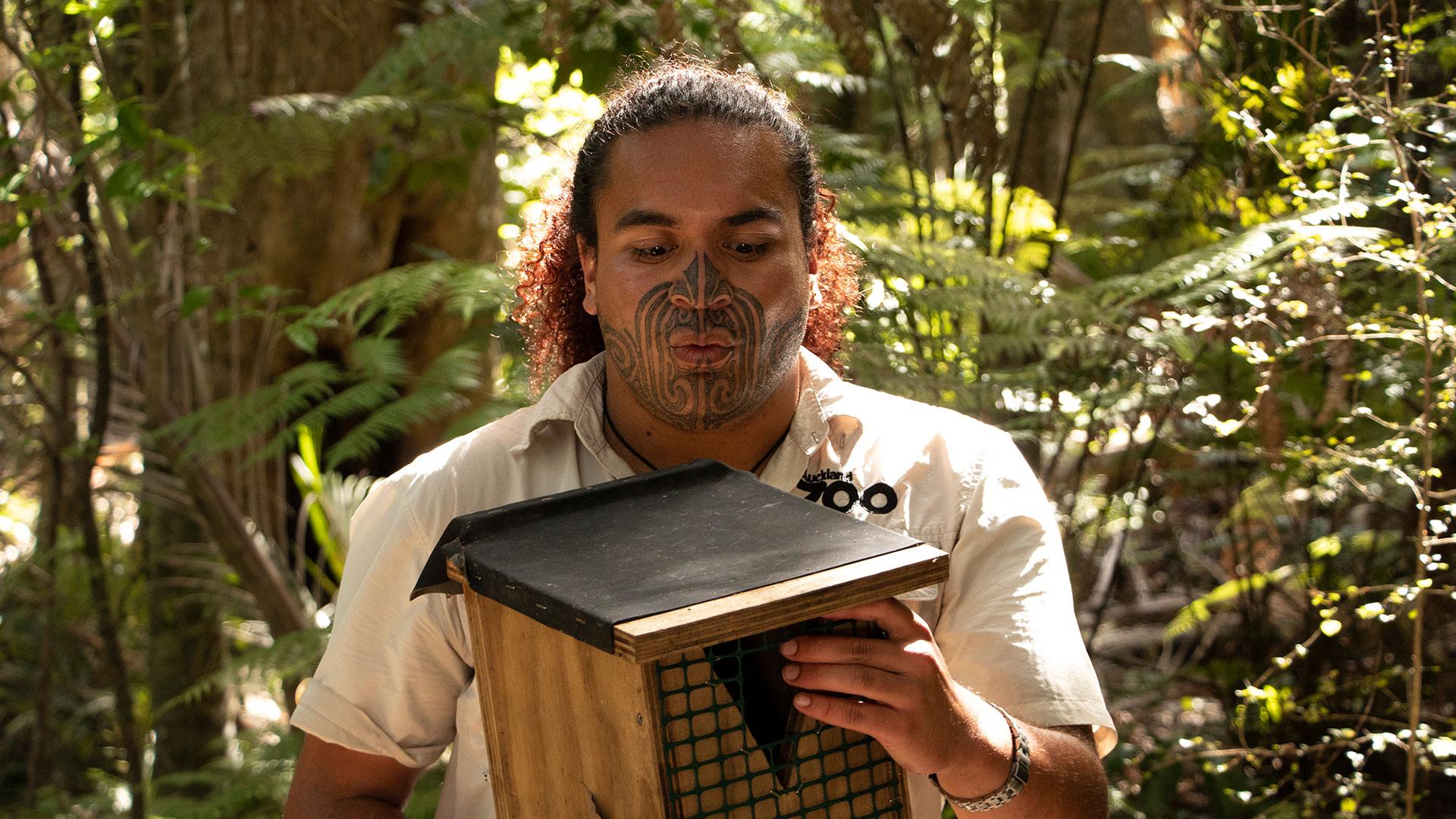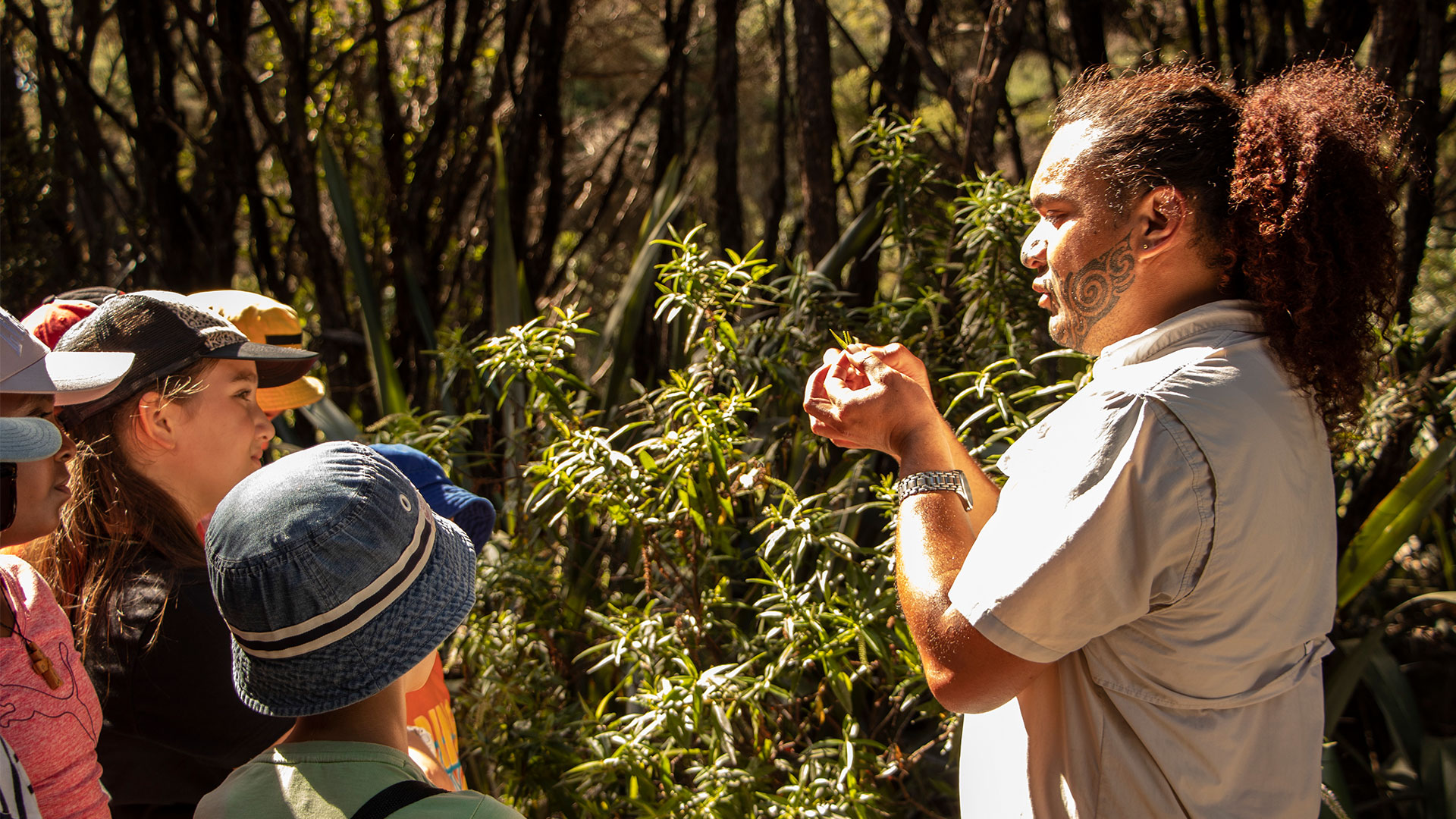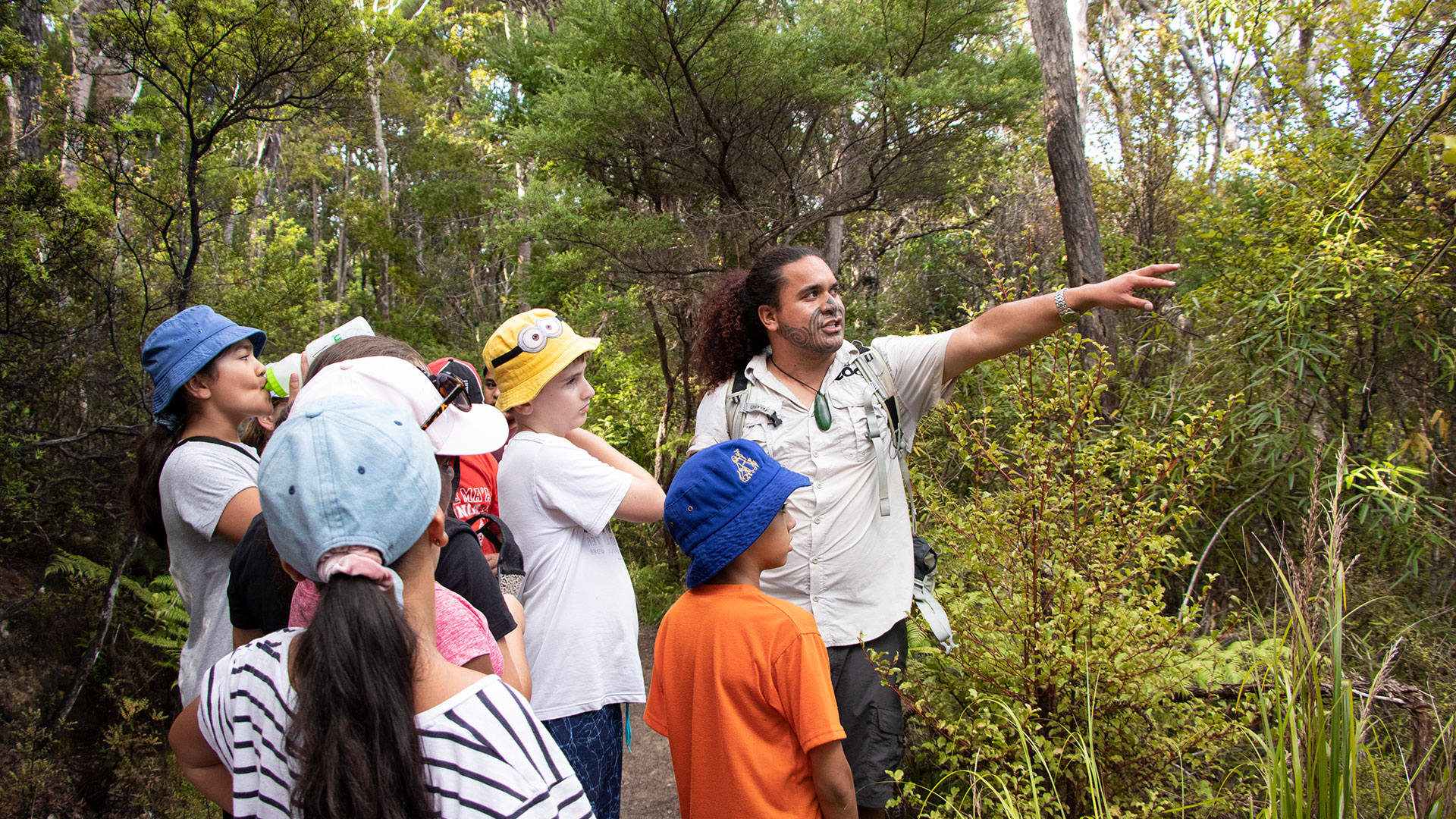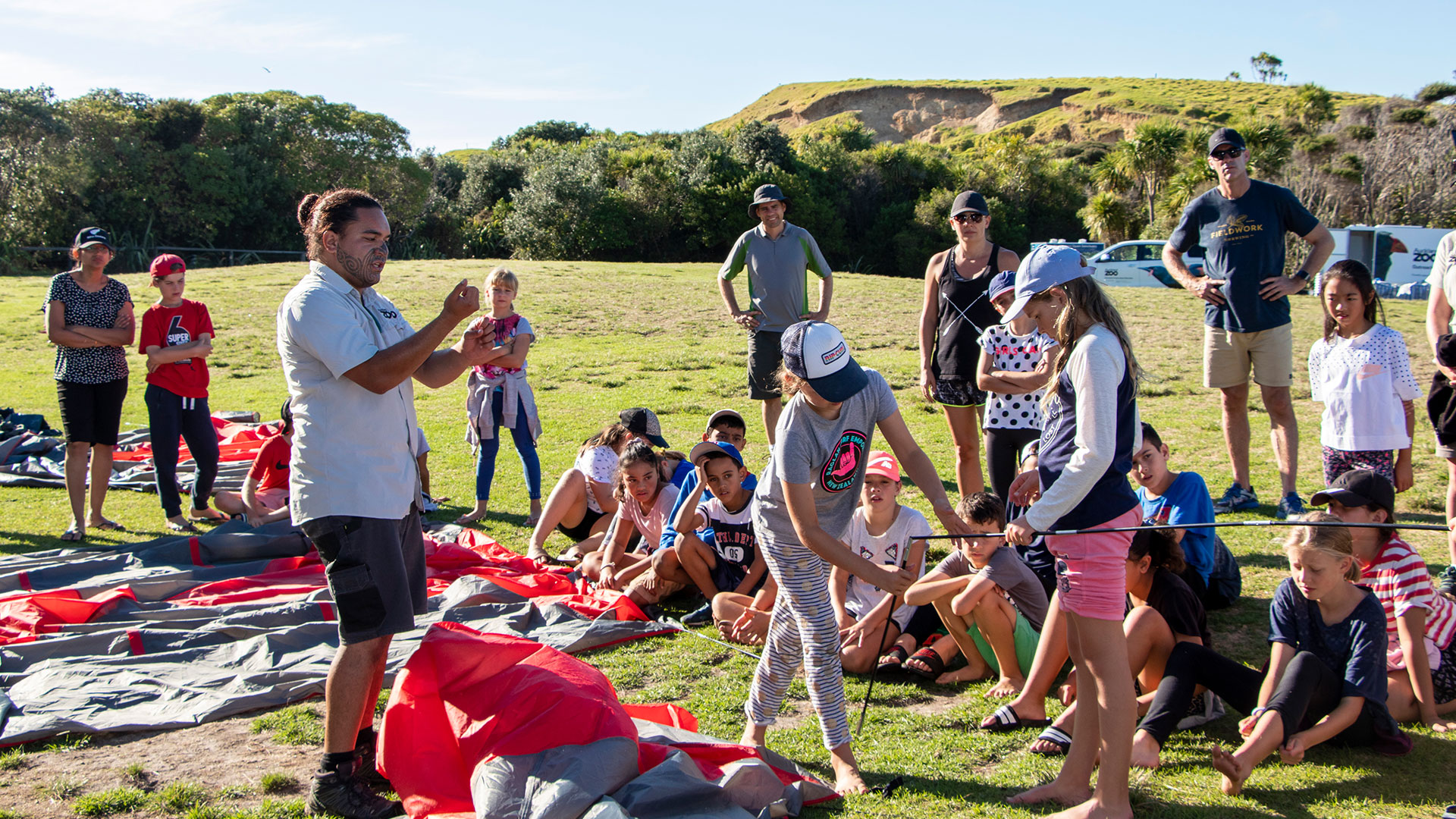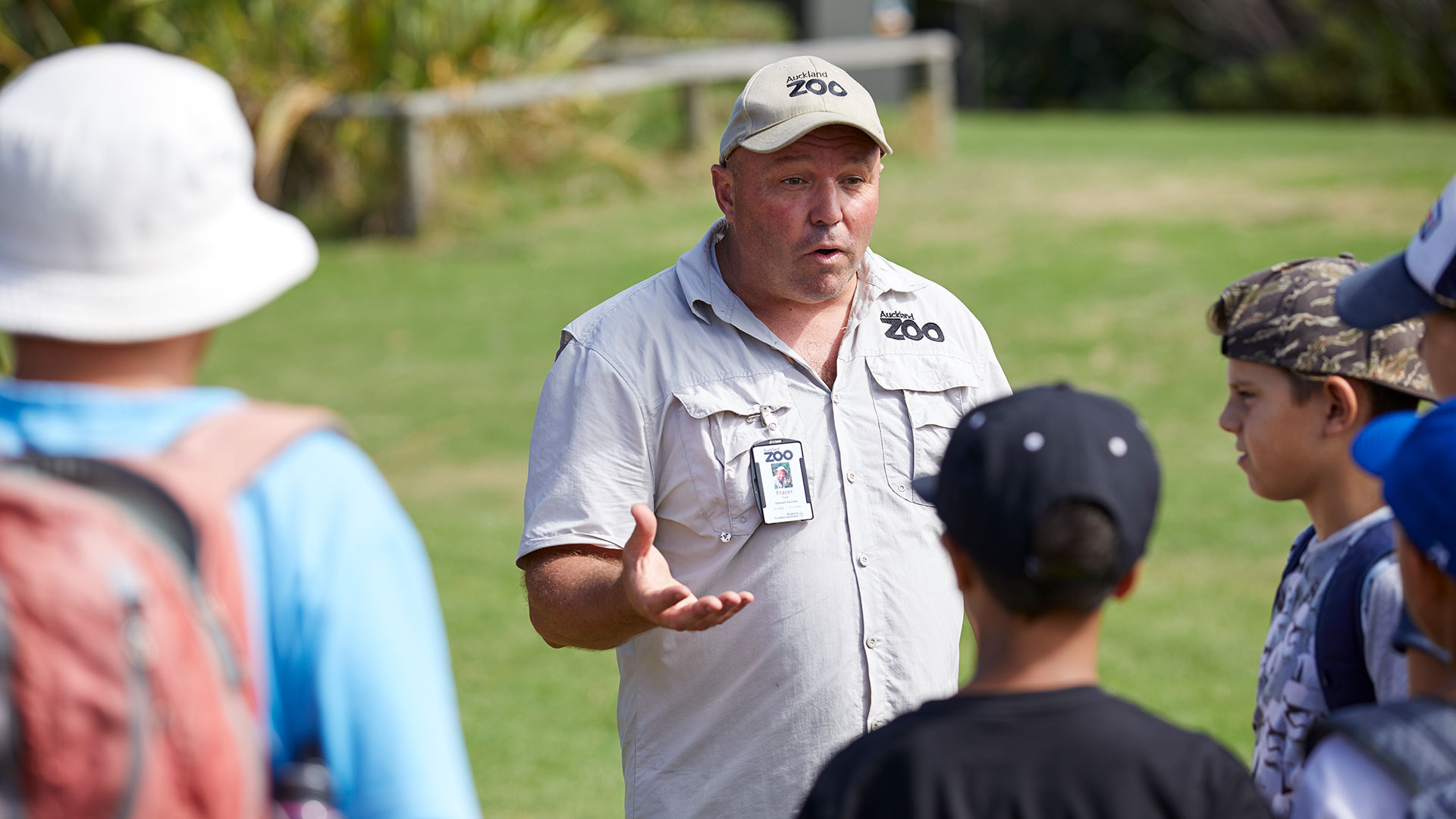If you haven’t spent much time in Aotearoa’s North Island, the sights of green pastures and rolling hills meeting the ocean may seem out of sorts – but the breath-taking contrast of colours, landscapes and wildlife is nothing short of a stunning sensory experience. It makes perfect sense that Auckland Zoo has chosen to run one of its Outreach Conservation Education programmes at Tāwharanui Regional Park – a place which perfectly embodies this ‘Pure New Zealand’ image and makes you swell with pride to call this beautiful part of the world home. More importantly, connecting future generations with wild life and wild places inspires children to be kaitiaki, or guardians, of our irreplaceable landscapes, now and into the future.
Video
Learn about our outreach education sessions!
Zoo educator Frazer discusses our conservation education programme and what kiwi kids get to experience in beautiful Tāwharanui
When the school bus pulls up off the beaten track and the door swings open, the loud excitable voices, and build up of energy almost steam roll its way into the park. You could be forgiven for thinking this was just a group of kids that have been sitting in a packed bus for over the threshold of what their little bodies would allow – as what you are really witnessing is a group of kids that were truly unable to contain their excitement for what they were about to experience. They’ve heard all about it from the previous school groups – the opportunity to see endangered wildlife in their natural habitats; go for stunning bush walks; learn about ways they can help wildlife and the environment in their own backyards; and, of course, the refreshing swim in the beautiful marine reserve. Plain and simple, this is effective conservation work in action – creating positive change IN future generations.
“Is that a takahē?” one student asked about a bird off in the distance.
“No, that’s a pūkeko. Takahē are a lot bigger, and they’re really endangered so we’ll be lucky to see one,” another student responded.
Conversations like these are incredibly encouraging. Conservation education is really standing its ground, with New Zealand endangered species and issues that face our unique country fast becoming a staple in our dialect. Auckland Zoo’s programme compliments what can be offered in the classroom, meeting schools halfway by bringing the students to the ‘wild’, and then bringing the teaching to the students. The first part of the trip involves equipping students with basic skills in monitoring, GPS, and pest management, so they can return to their school and home ‘citizen scientists’, and hone their skills while acting as kaitiaki of their own direct region.
The bush walk was the next thing on the excited students’ bucket lists, although this was not simply a ‘walk in the park’. Across undulating tracks, clearings with stunning unobstructed views of a marine reserve the bluest of blues, through dense bush and a bit of a climb, and returning across the white sand shores and caves on the beach – it really is more of a physical, mental and emotional journey. You are given an assortment of reasons to connect with your environment – learning everything from how to use kawakawa in traditional Māori medicine, to learning the different calls of our native species, and just visually taking in what stunning, untouched New Zealand bush really looks, sounds, feels and smells like.
Auckland ZooLike sponges at this impressionable age, children absorb every detail, meaning experiences like this can prove invaluable to shaping future conservationists and guardians of our wild places.
Once the sun goes down and Aotearoa’s fascinating nocturnal species stir from their slumber, it’s a completely different experience, and even feels like you’ve found yourself in another park. The kids gear up for their night walk – a silent tramp through the bush looking for kiwi, ruru, pateke, and even a chance to see some mesmerising insects via moonlight. With no civilisation nearby, the silence is deafening, only to be occasionally broken by the call of a bird. You only speak when invited to, so the kiwi aren’t scared away. Staying silent for children is no easy feat, but their silence spoke volumes in how much they treasured this experience, and respected the wildlife going about their business without disturbance.
A young female student spotted a large spider, and her attention was captured by the way the light hit the web, displaying it in all its glory. Rather than being scared, she was in awe. Her entire cohort joined in, looking for more huge webs, and different species of insects by torchlight. Maybe some fears are learnt, and if experiences like this can lead to a fascination of all creatures big and small, we may have better odds of saving and protecting them.
Away from our big city lights, the night is so much darker, and the sky, clearer. In this untouched sanctuary under the cover of night, you’re well aware you have entered a special area – one where you may feel a little out of place, as there’s no doubt that this does not belong to us, it belongs to our taonga. Only once you experience this feeling, can you completely understand how important it is to preserve these sanctuaries, ensure their protection, and guard it, for those that can’t do it themselves.
Like sponges at this impressionable age, children absorb every detail, meaning experiences like this can prove invaluable to shaping future conservationists and guardians of our wild places. Tāwharanui provides a truly immersive classroom, but without four walls and a ceiling. Instead it offers up the smell of kawakawa, the feeling of sand between your toes, the gust of wind from a kaka’s wings as it flies overhead, the call of a tīeke – all things every New Zealander needs to experience at some point in their lives. Connecting people with wildlife and wild places is our mission, as a sense of care and responsibility may be the key to a sustainable future.




